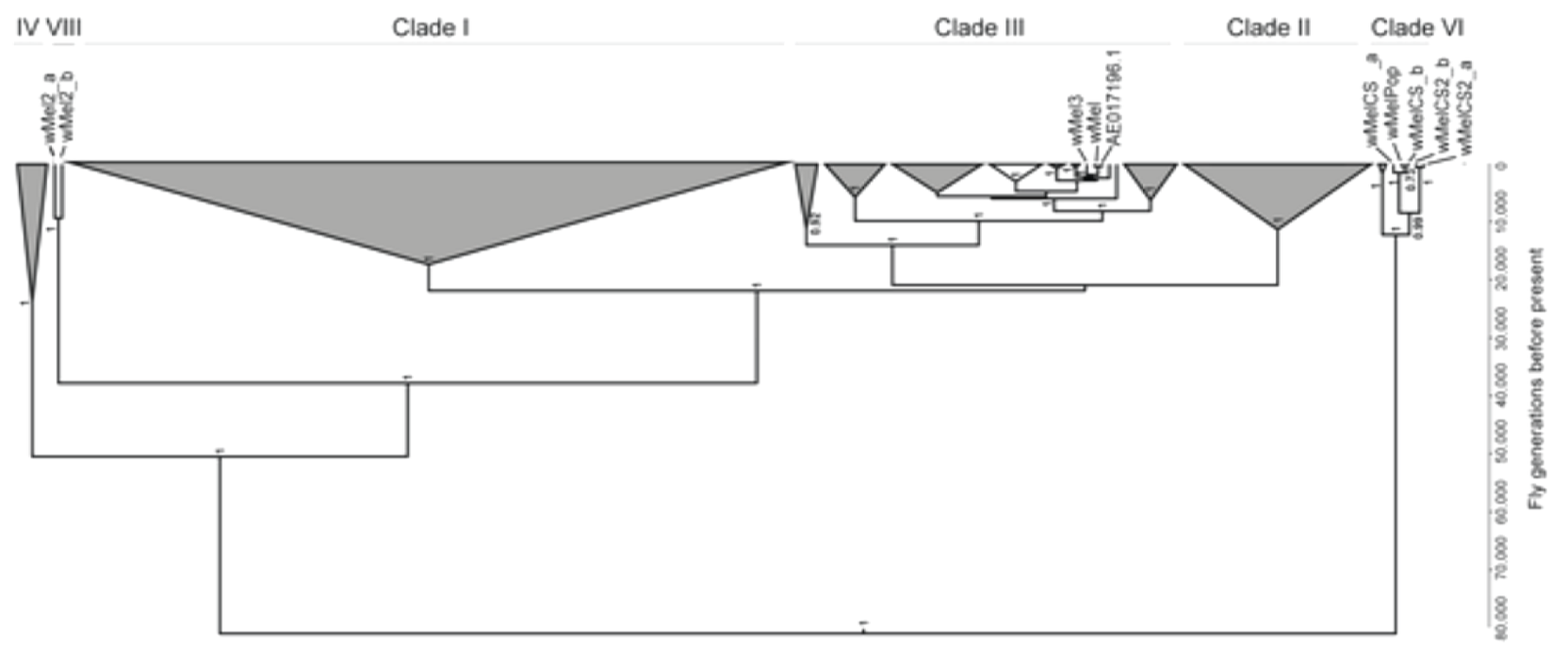Gnotobiotic Stocks
Luis Teixeira and colleagues introduced defined, fully sequenced Wolbachia strains into the genetic background of the DrosDel stocks. The evolutionary relationships of these strains are shown below.

These stocks were described in Chrostek et al. (2013) "Wolbachia variants induce differential protection to viruses in Drosophila melanogaster: a phenotypic and phylogenomic analysis" PLoS Genetics 9: e1003896.
___________________________________________
Wolbachia in the reference strain
Both the original and Bloomington versions of the stock sequenced as the reference genome (Stk# 2057) carry Wolbachia although Wolbachia was apparently lost in the version of the stock sequenced by the Genome Project. Characterization of the Wolbachia sequence in Stk# 2057 was reported in Gutzwiller et al. (2015) "Dynamics of Wolbachia pipientis gene expression across the Drosophila melanogaster life cycle" G3 5: 2843-2856.
___________________________________________
A cautionary note regarding the wMelPop strain
The "popcorn" strain of Wolbachia causes neurodegenerative phenotypes. Its pathogenicity is associated with the tandem duplication of an eight-gene region and the severity of the pathogenicity is proportional to the number of repeats. Tandem duplications are unstable rearrangements that can revert to a single repeat by intrachromosomal recombination. wMelpop strains with more than two repeats may lose repeats quickly. Strains with only two repeats are more stable, but reversion to a single copy is still possible. Be sure to verify the presence of tandem repeats when using wMelPop experimentally. More information is available in Chrostek & Teixeira (2015) "Mutualism breakdown by amplification of Wolbachia genes" PLoS Biol. 13(2): e1002065.
If you examine this stock for the presence of tandem repeats, please let us know. We would like help monitoring the stability of this stock.
____________________________________________
Wolbachia in the general collection
It was estimated that ~30% of the collection was infected in 2005 (Clark et al., 2005). We have not done any testing ourselves although we have had reports from users re. the Wolbachia status of a few stocks. Any information we have on the Wolbachia status of a particular stock can be found in a stock comment in the stock report. We note that all TRiP UAS-RNAi stocks tested thus far have tested positive so it is possible that most or all of the TRiP collection is Wolbachia positive (we have not added a stock comment for every TRiP stock).


